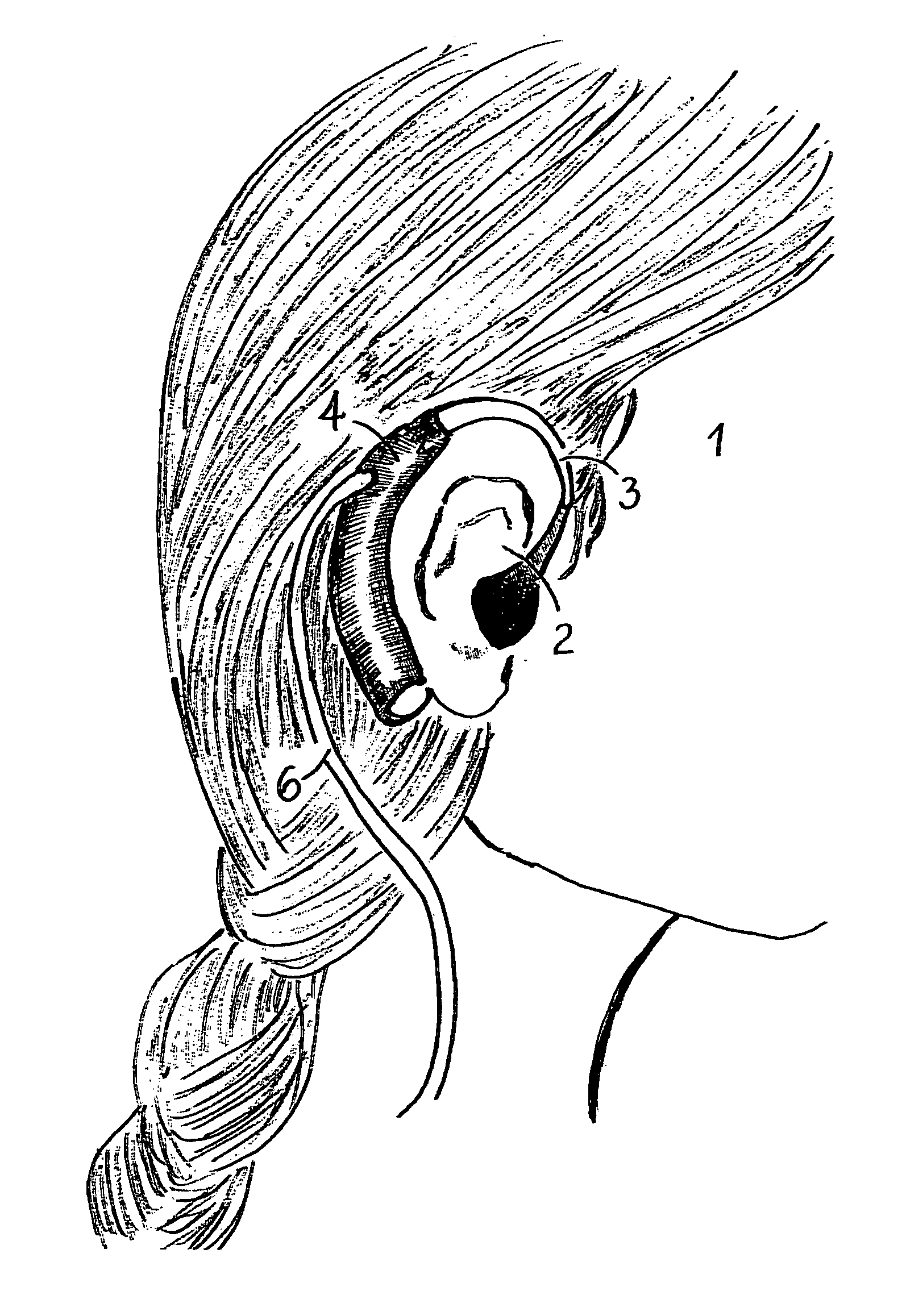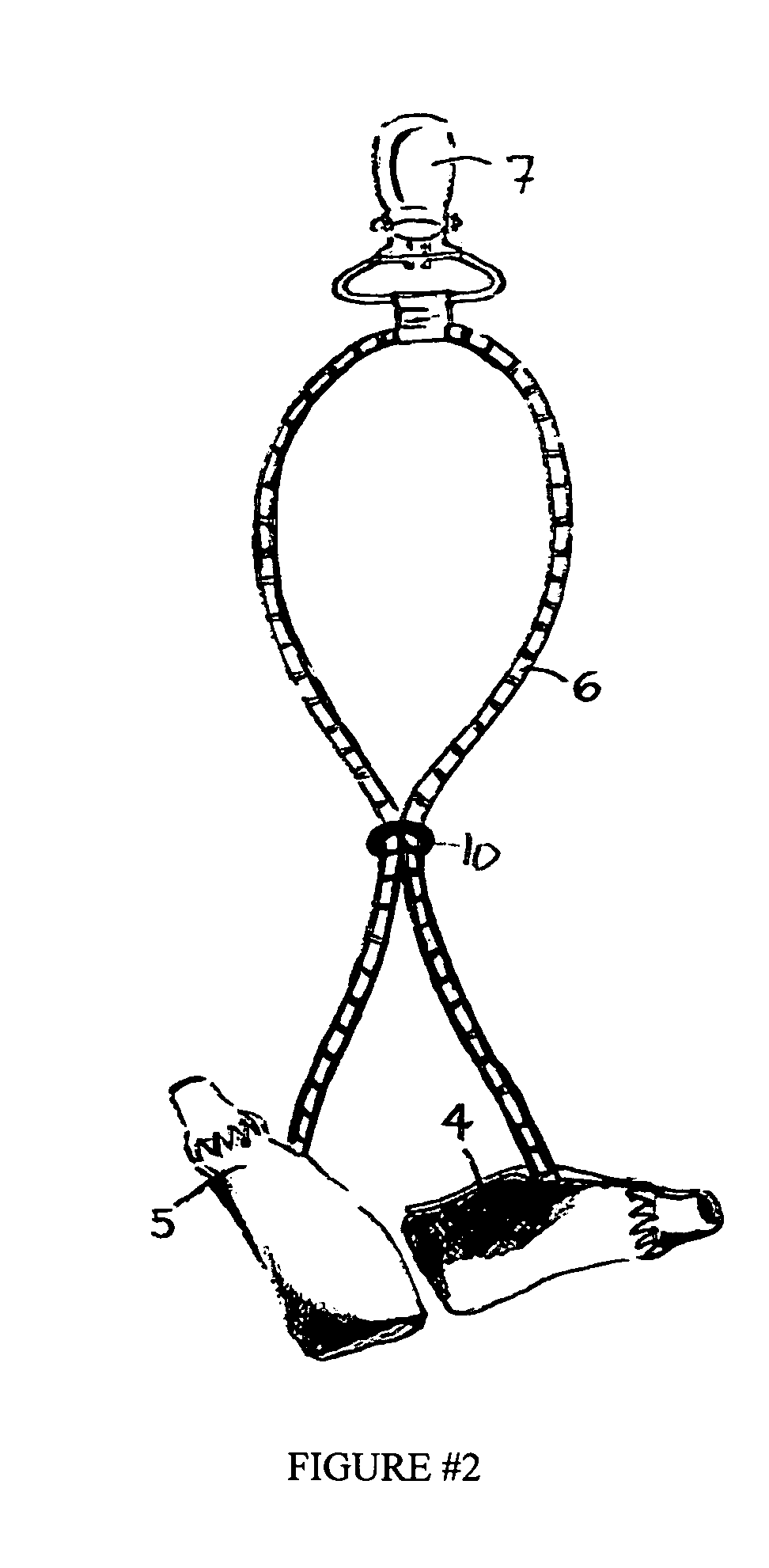Ear Gear
a technology of ear gear and earpiece, which is applied in the field of earpieces, can solve the problems of less than 1 db volume loss, insignificant, and drop in the clarity of sound received by btes microphones, and achieve the effect of easy removal, thrown away or los
- Summary
- Abstract
- Description
- Claims
- Application Information
AI Technical Summary
Benefits of technology
Problems solved by technology
Method used
Image
Examples
Embodiment Construction
[0084] Referring now in greater detail to FIG. #1 and FIG. #2, in FIG. #1, there is a woman 1 wearing a hearing aid on one side of her ears 2. In the form illustrated, the hearing aid consists of a BTE style aid 3 that is battery operated. The BTE 3 in enclosed inside of a Ear Gear sleeve 4. FIG. #2 illustrates in more detail, an elastic cord 6 has one end attached to the Ear Gear left sleeve 4 and another end attached to the right Ear Gear sleeve 5. At the centre of the cord 6, a clip 7 is attached. FIG. #2 illustrates the plastic cinching ring 10 that reduces lateral movement.
[0085] Referring now in greater detail to FIG. #3, FIG. #4a, and FIG. #4b. In FIG. #3 there is in the form illustrated a BTE style aid 3 that is enclosed in a sleeve 4 with the elastic cord 6 leading to the other sleeve 5 (not visible in FIG. #3). Please note that the hook part of the BTE is visible while the body of the BTE is inside the sleeve. FIG. #4a is a sectional illustration of the sleeve 4, showing ...
PUM
 Login to View More
Login to View More Abstract
Description
Claims
Application Information
 Login to View More
Login to View More - R&D
- Intellectual Property
- Life Sciences
- Materials
- Tech Scout
- Unparalleled Data Quality
- Higher Quality Content
- 60% Fewer Hallucinations
Browse by: Latest US Patents, China's latest patents, Technical Efficacy Thesaurus, Application Domain, Technology Topic, Popular Technical Reports.
© 2025 PatSnap. All rights reserved.Legal|Privacy policy|Modern Slavery Act Transparency Statement|Sitemap|About US| Contact US: help@patsnap.com



